Bayesian inference of river plastics in the South Atlantic Ocean
This work was published in Frontiers in Marine Science with a “Attribution of Plastic Sources Using Bayesian Inference: Application to River-Sourced Floating Plastic in the South Atlantic Ocean (2022)” by C.M. Pierard, D. Bassotto, F. Meirer and E. van Sebille.
Description
We developed a Bayesian inference framework to determine the probability that a piece of floating plastic found at sea came from a particular river by combining river emission data with Lagrangian simulations. The framework was tested in the South Atlantic Ocean, showcasing that particle age and location define the source probabilities.
Plastic emitted from principal rivers (clustered)
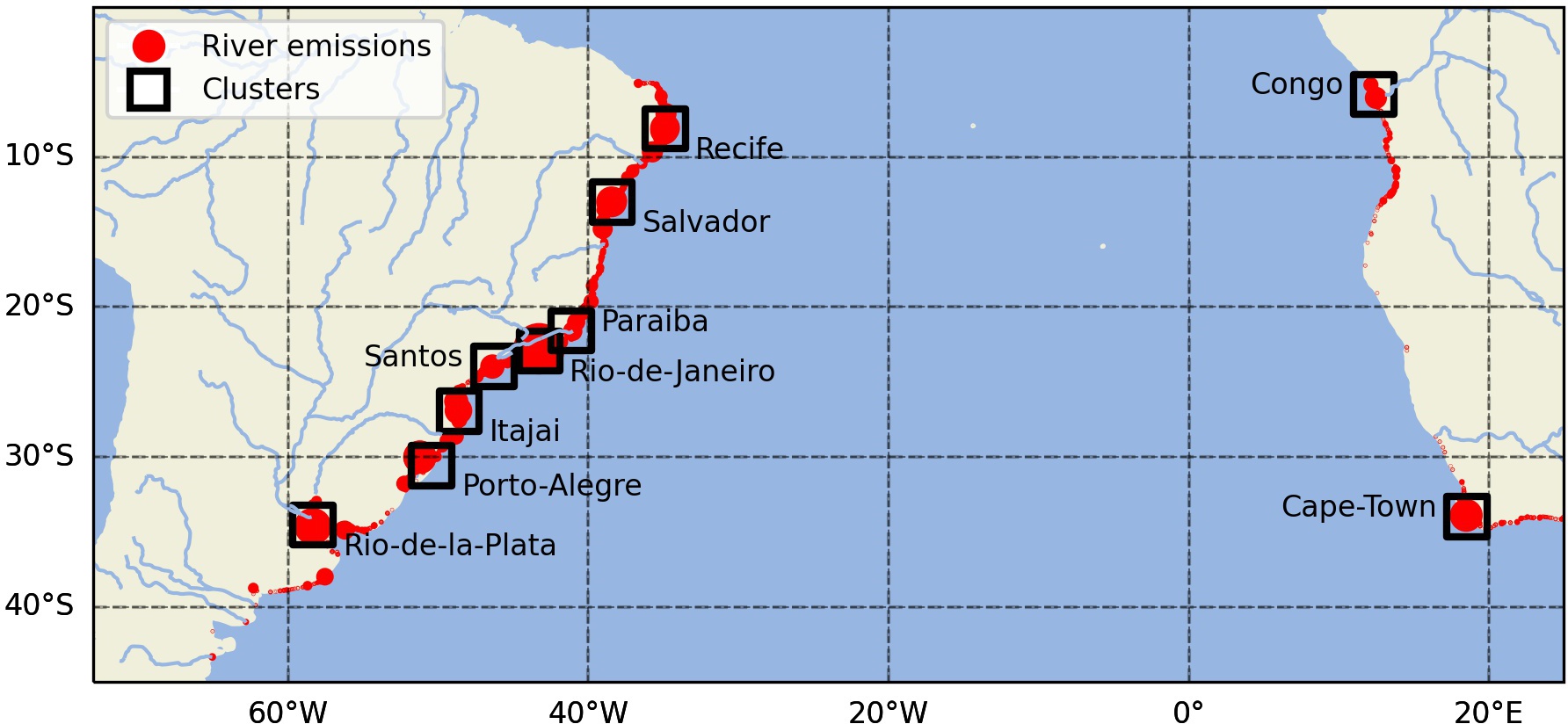
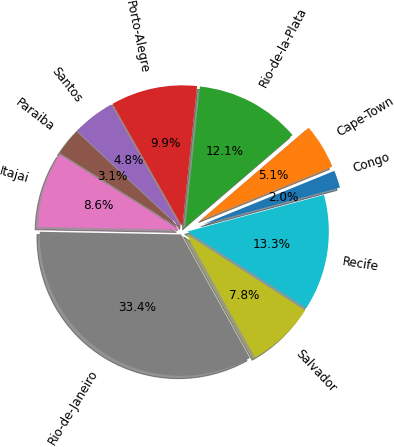
Figure 1: On the left the we show the main clusters of rivers emitting plastics in the South Atlantic. On the right, the percentage of plastic emitted from each cluster.
Lagrangian Simulations of plastic from river deltas
Video 1: one-year continous release of particles from the main river clusters in the South Atlantic. We released 100,000 particles per cluster.
Posterior probability
Click on the image to zoom in.
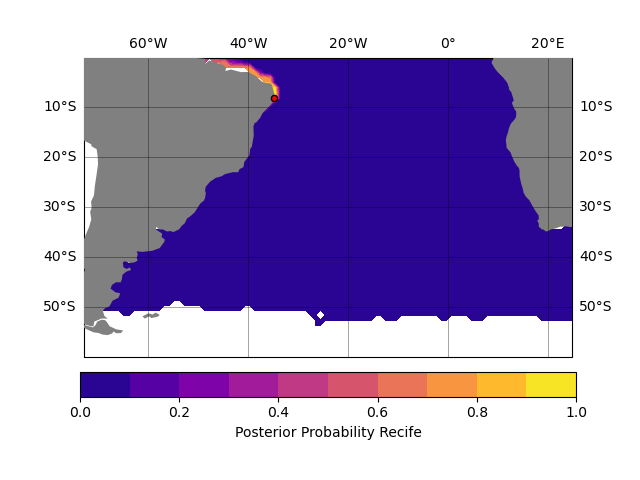
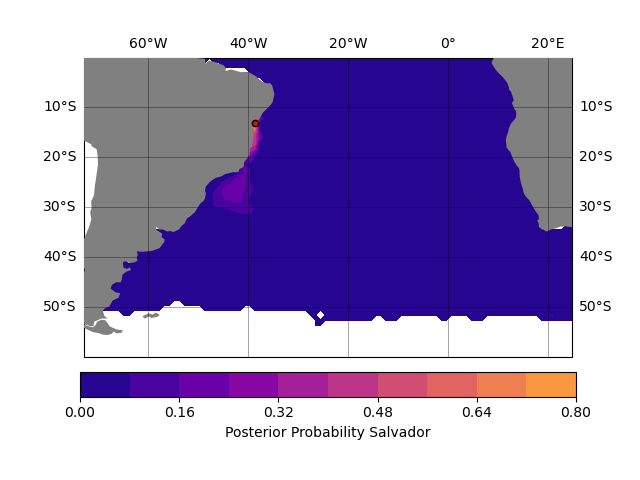
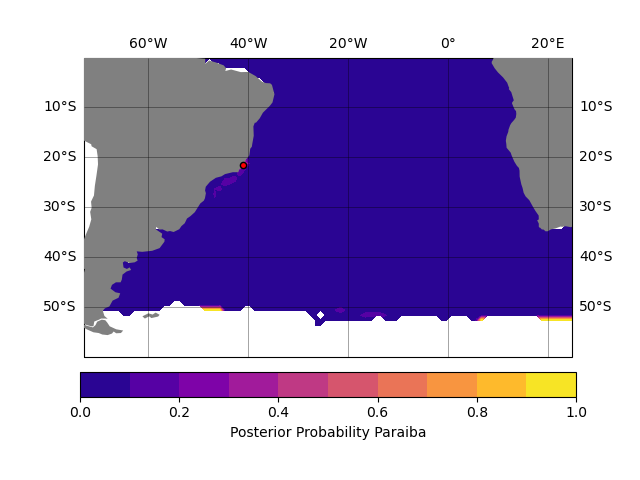
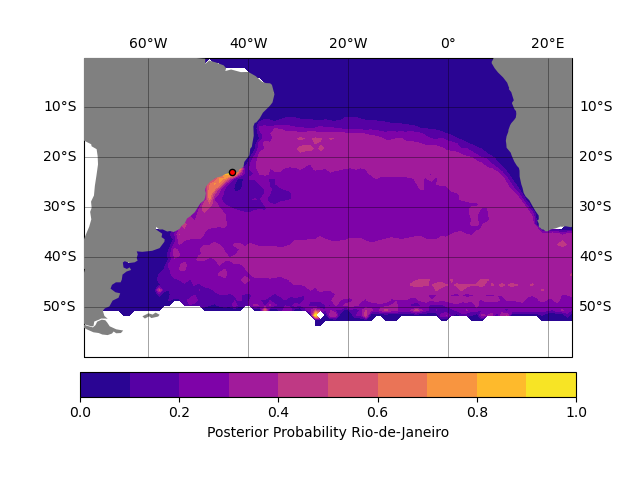
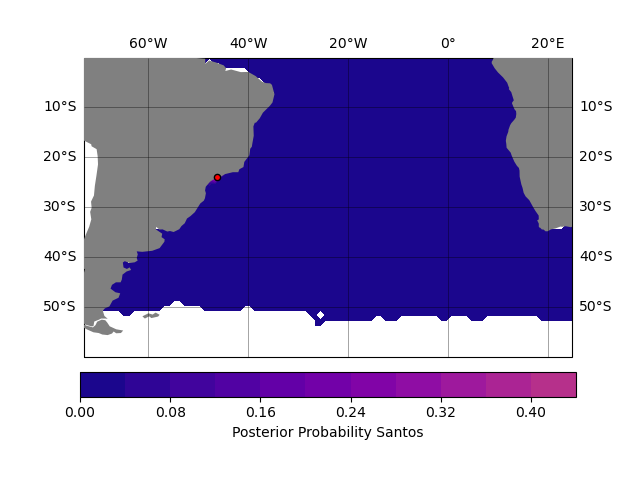
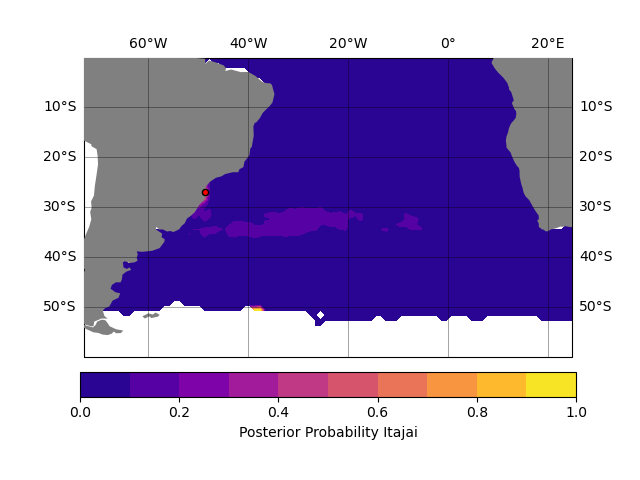
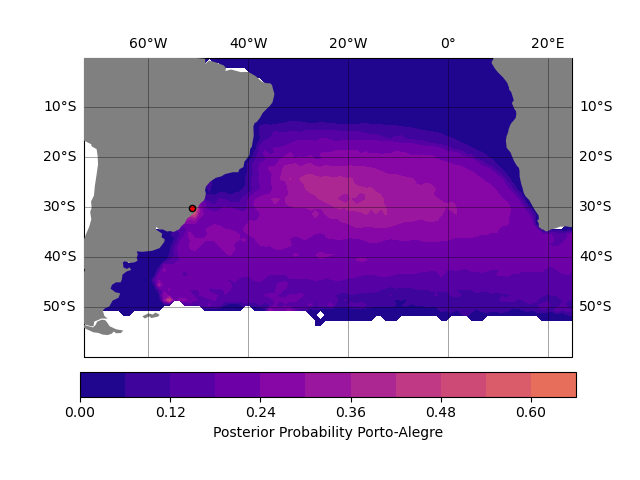
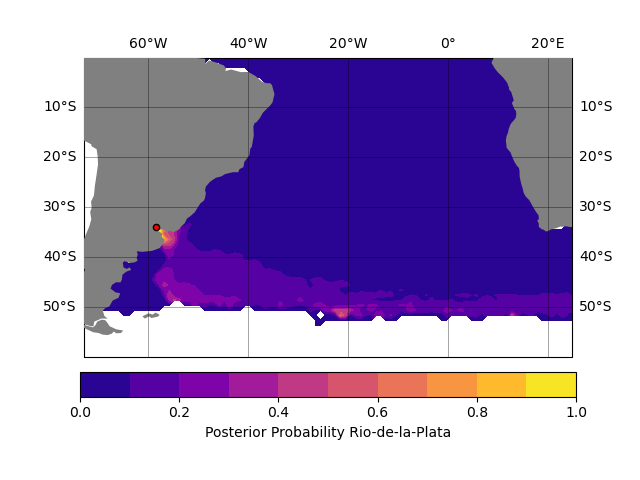
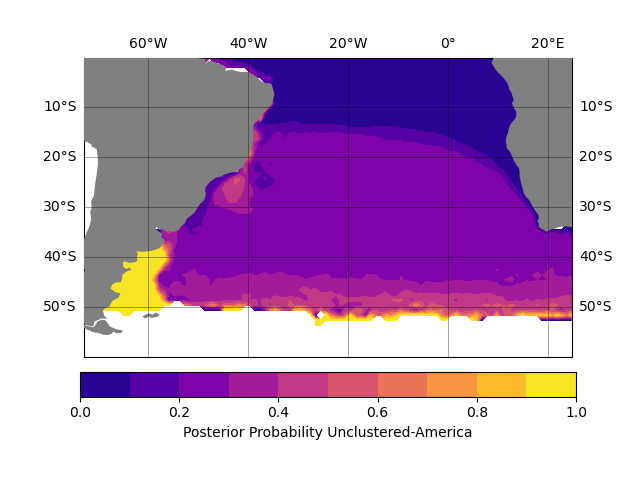
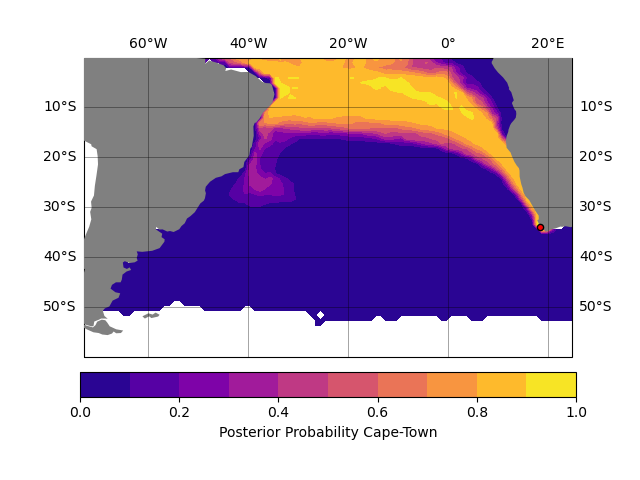
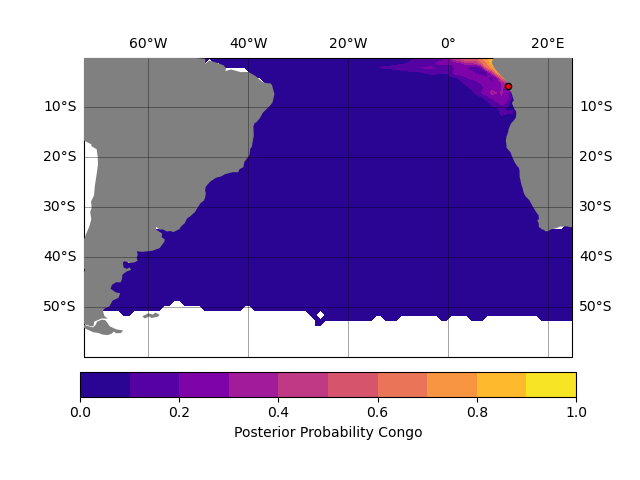
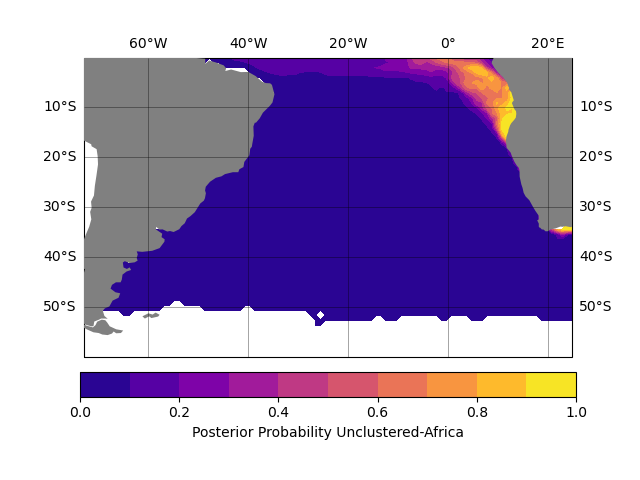
×
![]()